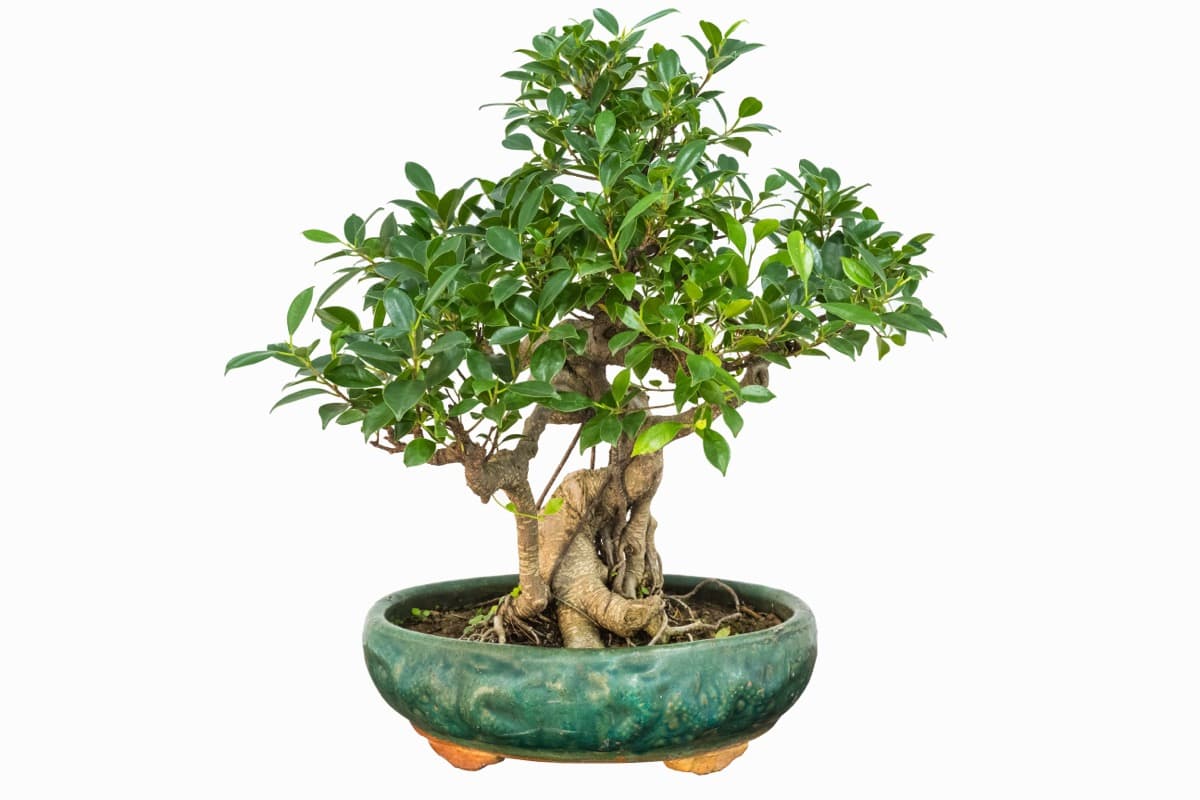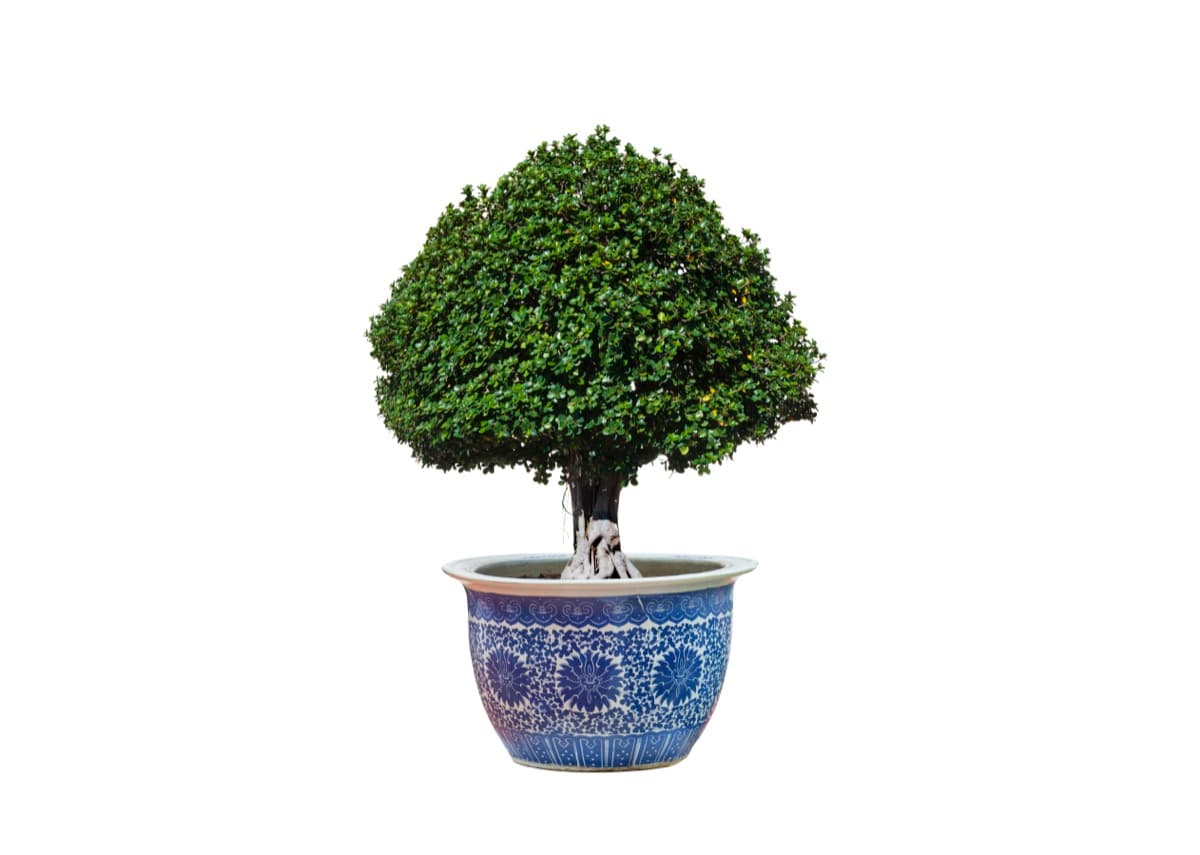Bonsai, the ancient Japanese art of growing miniature trees, has been practiced for centuries. The Banyan tree has emerged as a popular choice among the many types of trees used. This grand tree, known for its complex aerial root system and wide-spreading canopy, is an emblem of strength and longevity. The Banyan tree Bonsai offers an elegant miniature representation of its majestic full-sized counterpart.

This article will cover comprehensive details on how to grow and care for a Banyan Bonsai, addressing common queries like ‘Can we keep Banyan tree Bonsai at home’ and discussing the benefits of having a Bonsai Banyan tree at home. This step-by-step guide will also include tips on making a Banyan tree Bonsai right from the Banyan tree Bonsai seed.
How to Grow and Care for Banyan Bonsai
How to Plant a Banyan Bonsai Tree
Starting with planting a Banyan tree Bonsai seed, you begin your journey into the fascinating world of Bonsai cultivation. Before planting the seed, ensure it is thoroughly soaked in water for 24 to 48 hours. This soaking will trigger the germination process. Once soaked, plant your seed in a seed-starting mix in a shallow container. Maintain a constant temperature of about 70-75 degrees Fahrenheit and ensure good air circulation around the seed. With the right care, you should begin to see sprouts within two to six weeks.
Tips for Growing a Banyan Bonsai Indoors
Many wonders, ‘Can we keep Banyan tree Bonsai at home?’ Yes, you certainly can. Bonsai trees, including the Banyan variety, can be grown indoors with a few specific care instructions. They need lots of bright, indirect light, so position them near a south or east-facing window. Maintaining a consistent temperature between 70-75 degrees Fahrenheit is crucial. They also require high humidity, which can be achieved by placing the Bonsai on a tray filled with water and pebbles. Regular watering is necessary, but do not overwater as Banyan Bonsai trees are susceptible to root rot.
Pruning Techniques for Banyan Bonsai Trees
Pruning is a vital part of the journey to making a Banyan tree Bonsai. It helps maintain the desired shape of your tree and encourages the development of a dense foliage canopy. The ideal time to prune your Banyan Bonsai is early spring or late summer. Begin by removing dead or diseased branches. Next, trim back any branches that disturb the overall aesthetics of the tree. Remember, the goal is to maintain the tree’s miniature size and proportionate design. Regular pruning also allows light to reach the inner branches, promoting overall health.
How to Care for a Banyan Bonsai Tree
The care for a Banyan Bonsai tree involves a balance of several factors. The tree should be watered regularly, ensuring the soil is always damp but never waterlogged. Remember, Banyan Bonsai trees need a lot of light. They should be kept in a bright place without direct, harsh sunlight. Humidity is also crucial for these trees. Mist your Banyan Bonsai daily or use a humidity tray to maintain high moisture levels. Lastly, ensure regular nourishment for these trees. Apply a balanced Bonsai fertilizer, feeding your tree every two weeks in the growing season and monthly in winter.
Common Problems When Growing Banyan Bonsai Trees
Even with the utmost care, you might encounter issues growing Banyan Bonsai trees. One common problem is leaf yellowing or dropping, usually caused by overwatering, poor lighting, or drastic temperature changes. Correct the environment, and the tree should recover. Another common issue is pests like aphids, spider mites, or scale insects. These can be managed by using an insecticidal soap or a mild pesticide. Lastly, Banyan Bonsai trees can suffer from root rot if they’re overwatered or have poor drainage. Adjust watering schedules and ensure proper drainage to avoid this issue.
In case you missed it: How to Grow and Care for Elephant Bush Bonsai: Planting, Pruning, and Repotting

Training Techniques for Banyan Bonsai Trees
Training a Banyan Bonsai tree involves manipulating the tree’s growth to create a miniature yet realistic version of a full-sized Banyan tree. Wire training is a popular method where wire is wrapped around branches and the trunk, gently bending them to achieve the desired shape. Monitor the tree closely to ensure the wire doesn’t cut into the bark as the tree grows. Clip-and-grow is another technique where strategic pruning controls the tree’s shape and growth direction.
Banyan Bonsai Tree Species and Varieties
Several varieties of Banyan trees can be grown as Bonsai. The most common is the Indian Banyan tree, known for its impressive aerial roots and extensive canopy. Another popular variety is the Chinese Banyan, appreciated for its small leaves and tolerance to indoor conditions. Additionally, the Moreton Bay Fig is often used for Bonsai due to its sturdy trunk and ornamental roots. Each of these Banyan tree varieties brings its unique aesthetic charm to the art of Bonsai.
Repotting Your Banyan Bonsai Tree
Repotting is another essential step in maintaining the health and aesthetics of your Banyan Bonsai. This process is typically done every two to three years, but the frequency may vary depending on the tree’s growth rate and the size of the pot. When the roots begin to circle the pot or emerge from the drainage holes, it’s time to consider repotting. Begin by carefully removing the tree from its current pot.
Gently untangle and trim the roots, keeping the healthiest and strongest ones. Next, select a pot that’s slightly larger than the previous one. Place a layer of the recommended soil mix at the bottom of the new pot, place your Banyan Bonsai in it, and then fill the pot with soil, ensuring it gets between the roots for stability. Remember to water thoroughly after repotting. This step encourages root growth, ensures the Bonsai doesn’t outgrow its pot, and keeps the tree healthy and vibrant for years.
In case you missed it: How to Pollinate Tomatoes: Are Tomato Flowers Self-Pollinated or Cross-Pollinated?
Best Soil Mix for Banyan Bonsai
The choice of soil mix is crucial in the growth and health of a Banyan Bonsai. These trees prefer a well-draining soil mix. A good mix would include coarse sand, peat moss, and perlite in equal proportions. This combination perfectly balances water retention, drainage, and aeration. Regularly check the soil, replenish it as needed, and ensure the Bonsai’s pot has drainage holes to prevent waterlogging.
Banyan Bonsai Tree Propagation Methods
When it comes to propagating Banyan Bonsai trees, there are several methods you can employ. Cuttings are the most common and easiest method. Simply take a stem cutting with a few leaves, plant it in the appropriate soil mix, and wait for it to root. Another method is air layering, where a portion of the tree’s bark is removed, wrapped with sphagnum moss and plastic, and left to grow roots before being cut off and planted as a new tree. Lastly, Banyan Bonsai can be grown from seeds, although this method requires more patience and care.

Conclusion
Cultivating a Banyan Bonsai tree is a rewarding and artistic endeavor. Whether starting from a Banyan tree Bonsai seed or using propagation methods, you can create a miniature masterpiece right at home with the right care and techniques. Along with enhancing your living space, there are numerous Bonsai Banyan tree benefits, including improved air quality and a calming influence. With patience, precision, and a passion for growing things, anyone can embark on this fascinating journey of Bonsai cultivation.
- Feed Your Flock for Less: Top 10 Tips to Save on Chicken Feed
- Ultimate Guide to Ossabaw Island Hog: Breeding, Raising, Diet, and Care
- Hatching Answers: The Top 10 Reasons Your Chickens Aren’t Laying Eggs
- Eggs and Economics: Breaking Down the Cost of Raising Backyard Chickens
- Defend Your Greens: Proven Methods to Keep Iguanas Out of Your Garden
- Ultimate Guide to Cinnamon Queen Chicken: A Comprehensive Guide for Beginners
- Ultimate Guide to California Tan Chicken: Breeding, Raising, Diet, Egg-Production and Care
- Ultimate Guide to Marsh Daisy Chicken: Breeding, Raising, Diet, and Care
- 10 Types of Chicken Farming Businesses You Can Start for Profits